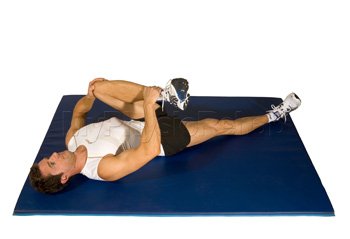Hips don't lie. Well, it looks like Shakira was right!! Part one:
Well, I can't say this song makes my Spotify playlist, however it turns out it does have some merit.
Hips are often overlooked, but play a vital role in how we move and are a underrated link in the chain from the lower back to the lower limb when we are sitting, moving and exercising.
Some stiffness along with some associated weakness is not a great recipe for success and one that we are more frequently seeing in the clinic.
As we become more sedentary and desk based this has flow on effects for tightening some muscle groups (think hip flexors and hamstrings) and deconditioning others (we're talking about your glutes here- or simply your bum, not to mention your core)
The balance and combination of how these muscles work together are vital to be able to exercise, run, bend and even sit comfortably.
Some common hip tightness causes:
Sedentary Lifestyle: Prolonged periods of sitting can lead to tightness in the hip flexors and hamstrings. These muscles are placed in a shortened position when sitting and when we sit for extended periods, they can become tight and restrict hip mobility.
Lack of Stretching and Mobility Exercises: Failing to regularly stretch and perform mobility exercises for the hip joints can contribute to tightness. Without proper stretching and movement, the muscles and connective tissues around the hips may become stiff and inflexible.
The old use it or lose it proves true in this case!
Muscle Imbalances: Muscle imbalances, such as weak glutes and tight hip flexors, can lead to hip tightness. When certain muscles are weak, others may compensate by tightening up to provide stability and support, resulting in overall hip tightness.
Overuse or Repetitive Movements: Engaging in repetitive activities or overusing certain muscles around the hips, such as in sports or specific occupations, can lead to tightness. The constant strain on the muscles can cause them to tighten and become less flexible.
Postural Issues: Poor posture, such as excessive anterior pelvic tilt or rounded shoulders, can contribute to hip tightness. These postural deviations can affect the alignment and mechanics of the hip joints, leading to tightness and discomfort.
Injury or Trauma: Previous injuries or trauma to the hip area, such as strains, sprains, or fractures, can result in scar tissue formation and tightness. The body's natural healing process may lead to the development of tightness and restrictions in the affected area.
Nice to read about, but you really want some tips and what to do right? - our Top 3 Hip mobility exercises :
Hip Flexor stretch
Kneel on leg to be stretched
Lunge forward, squeeze gluteals and lean back slightly
Feel stretch in front of hip and thigh
Hold for 30 seconds and repeat 2x
Hip Mobilisation
Sitting with knees bent supported on hands
Drop the knees to 1 side as far as pain or stiffness allows and pause
Repeat to the other side
2 sets of 10
Piriformis Stretch
Pull knee to chest
Then grasp ankle & allow the keen to move to the side as you bring your ankle towards opposite shoulder
Ensure the non-stretching leg is not rotated out
Vary the position until you feel stretch deep in buttock
Hold for 30 seconds, repeat twice.





